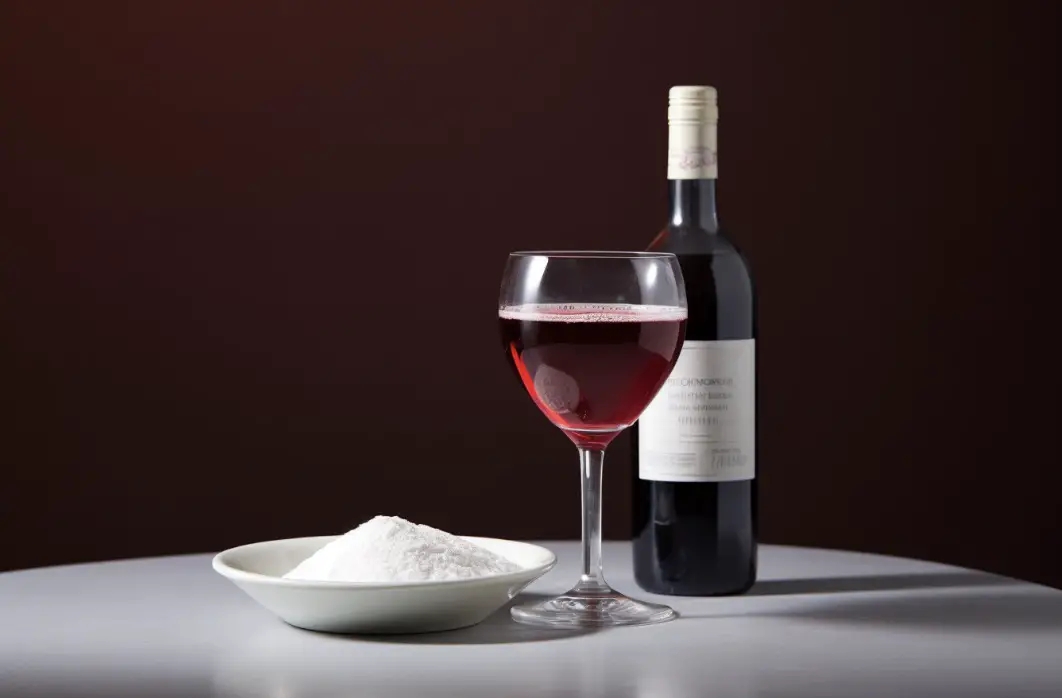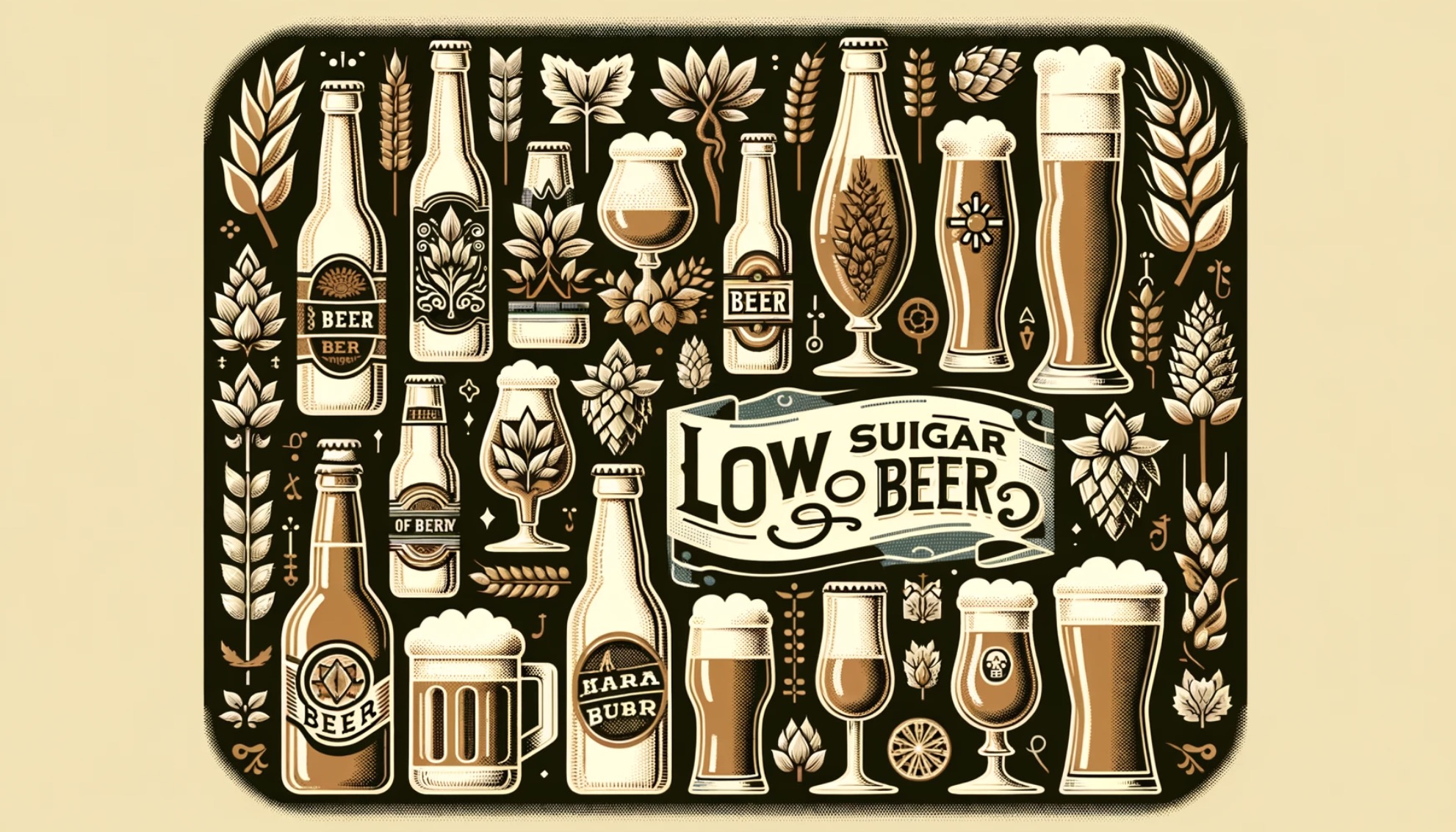In the world of wine brewing, baking soda is probably one of the last ingredients you’d think of adding. However, it can be a real game-changer for those looking to enhance their homemade wine’s overall flavor profile.
Why should you add baking soda to wine? Baking soda can help adjust the pH of your wine, reduce its acidity, and thus improve its taste and feel. As a seasoned brewer, I’ve used this trick many times to achieve a smoother, more balanced product.
The Importance of pH in Winemaking
When it comes to winemaking, pH is everything. This simple number can greatly influence a wine’s taste, color, and stability.
A wine’s pH level affects how we perceive its acidity, sweetness, and overall flavor. It also determines how much sulfite (campden) you need to stabilize it.

A wine with a low pH (high acidity) will taste sharp and crisp, while a wine with a high pH (low acidity) will taste softer and richer. Baking soda, being an alkaline substance, can be used to increase the pH of wine and reduce its acidity.
How to Add Baking Soda to Wine
Adding baking soda to your wine is a straightforward process. You should start by taking a small sample of your wine, say one cup. Add a small amount of baking soda to this sample, about 1/4 teaspoon. Stir it well and then measure the pH.

If the pH has reached your desired level, you can calculate how much baking soda you’ll need for the entire batch. If not, repeat the process until you achieve the desired pH.
When to Add Baking Soda to Wine
The best time to add baking soda to wine is during the fermentation process. This is when the wine’s acidity is highest, and the baking soda can have the most impact. However, it’s important to note that adding baking soda too early can inhibit the yeast’s activity, so it’s best to wait until the primary fermentation has completed.
Potential Risks of Adding Baking Soda to Wine
While baking soda can be beneficial in the winemaking process, it should be used sparingly and with caution. Overuse of baking soda can lead to a flat, dull taste in the wine. Moreover, too much baking soda can also cause cloudiness in the wine, affecting its appearance.
Other Methods to Reduce Acidity in Wine
While baking soda is effective in reducing the acidity of wine, it’s not the only way. Other methods include blending with low-acidity wines, using acid-reducing yeast strains, and adding calcium carbonate (also known as precipitated chalk) during the fermentation process.
Perceived acidity in wine is a complex interplay of various factors, including the actual chemical acidity, the wine’s flavor profile, and the balance between other components like sweetness and tannins. If you’re looking to reduce the perceived acidity in wine, here are some methods you can consider:
- Aging: Allowing the wine to age can mellow out its acidity over time. As the wine matures, the chemical reactions that occur during aging can soften its flavors and reduce the perception of acidity.
- Malolactic Fermentation: This process involves converting harsher malic acid (found in green apples) into softer lactic acid (found in milk). This can result in a creamier mouthfeel and reduced perceived acidity.
- Blending: Mixing wines with different characteristics can help balance out acidity. For example, blending a higher-acid wine with a wine that’s lower in acidity can create a more balanced final product.
- Sweetness: A touch of sweetness can mask acidity to some extent. Wines with a hint of residual sugar can offset the perception of acidity and create a smoother taste profile.
- Oak Aging: Wines aged in oak barrels can undergo subtle chemical changes that lead to a reduction in perceived acidity. The oak can impart flavors that balance out the sharpness of acidity.
- Grapes and Harvest Timing: The choice of grape variety and the timing of the harvest can influence acidity. Riper grapes tend to have lower acidity levels, so harvesting a bit later can result in a wine with a softer acidity.
- Cold Stabilization: Cooling the wine to near-freezing temperatures before bottling can cause some of the tartaric acid to crystallize and settle out. This can help reduce the perceived acidity in the finished wine.
- Decanting and Aeration: Allowing the wine to breathe through decanting or swirling in the glass can help soften its flavors and reduce the perception of acidity.
- Food Pairing: Sometimes the perception of acidity can be balanced by pairing the wine with certain foods. Fatty or creamy foods can help counterbalance the acidity.
Remember that the goal is not to completely eliminate acidity, as it is a crucial component of a wine’s structure and balance. Instead, these methods aim to create a more harmonious and well-rounded tasting experience.
The effectiveness of these methods can vary depending on the specific wine and its characteristics, so experimentation may be needed to find the right approach for a particular situation.
The Final Verdict: Should You Add Baking Soda to Your Wine?
As with any winemaking technique, the use of baking soda should be considered carefully. It can be a useful tool in correcting overly acidic wines, but it must be used with discretion. If used correctly, baking soda can help create a more balanced, enjoyable wine.
Conclusion: Adding Baking Soda to Wine – A Brewer’s Perspective
Adding baking soda to wine is a winemaking technique that, when used properly, can greatly enhance a wine’s flavor. However, it should be used sparingly and with care to avoid negatively impacting the wine’s taste and appearance.
To summarize, here are 10 key facts about adding baking soda to wine:
1. Baking soda can be used to adjust the pH of wine.
2. It works by reducing the wine’s acidity, leading to a smoother taste.
3. The best time to add baking soda is after the primary fermentation process.
4. Overuse of baking soda can result in a flat, dull taste.
5. Excessive baking soda can cause cloudiness in the wine.
6. The use of baking soda in winemaking should be carefully considered.
7. Other methods of reducing acidity include blending and using acid-reducing yeast strains.
8. Baking soda should be added to a sample of the wine first to test the results.
9. The amount of baking soda needed will depend on the initial acidity of the wine.
10. A balanced use of baking soda can result in a more enjoyable wine.
FAQs
How do you fix wine that is too sweet?
To fix wine that is too sweet, there are a few methods you can try. One option is to add acidity to the wine by incorporating lemon juice or tartaric acid in small increments until the desired balance is achieved. Another approach is to blend the sweet wine with a dry wine to dilute the sweetness. Additionally, you can try using activated charcoal or bentonite clay to remove some of the residual sugars. It’s important to note that these methods may alter the overall flavor profile, so it’s advisable to proceed with caution and taste the wine as you make adjustments.
How do you make cheap wine taste sweeter?
To make cheap wine taste sweeter, you can try a few techniques. One option is to add a sweetener like simple syrup or honey to your glass of wine, stirring it gently to incorporate. Another approach is to pair the wine with sweeter foods, as they can enhance the perception of sweetness in the wine. Additionally, chilling the wine slightly can help mask any unpleasant flavors and make it taste smoother. However, it’s important to note that these methods may not completely transform the taste of the wine, as the quality of the wine itself plays a significant role in its overall flavor profile.
How do you neutralize the acidity in wine?
To neutralize the acidity in wine, you can use a process called deacidification. There are a few methods to achieve this. One common approach is to blend the acidic wine with a less acidic wine to lower the overall acidity. Another method is to add a substance called calcium carbonate, also known as chalk or limestone, which can help reduce the acidity. However, it’s important to note that adjusting the acidity of wine should be done with caution, as it can affect the overall balance and flavor profile of the wine.
How do you reduce volatile acidity in wine?
One way to reduce volatile acidity in wine is through proper fermentation management. Controlling fermentation temperature, yeast selection, and nutrient management can help minimize the production of acetic acid, the primary contributor to volatile acidity. Additionally, maintaining good hygiene practices during winemaking and avoiding exposure to oxygen can also help reduce volatile acidity.
What is volatile acidity in fermentation?
Volatile acidity in fermentation refers to the presence of acetic acid, which is a byproduct of yeast metabolism during the fermentation process. It is responsible for the sour or vinegar-like aroma and taste in wine and other fermented beverages. While a certain level of volatile acidity is acceptable and contributes to the complexity of some wines, excessive amounts can indicate a fault or spoilage in the fermentation.
What can I add to sweet wine to make it taste better?
To enhance the taste of sweet wine, you can consider adding a few ingredients or engaging in certain practices. Some options include adding a splash of citrus juice (such as lemon or lime) to add acidity, incorporating a small amount of sparkling water for effervescence, or infusing the wine with fresh fruits or herbs to introduce new flavors. Additionally, serving the sweet wine chilled can help balance its sweetness and make it more enjoyable.




